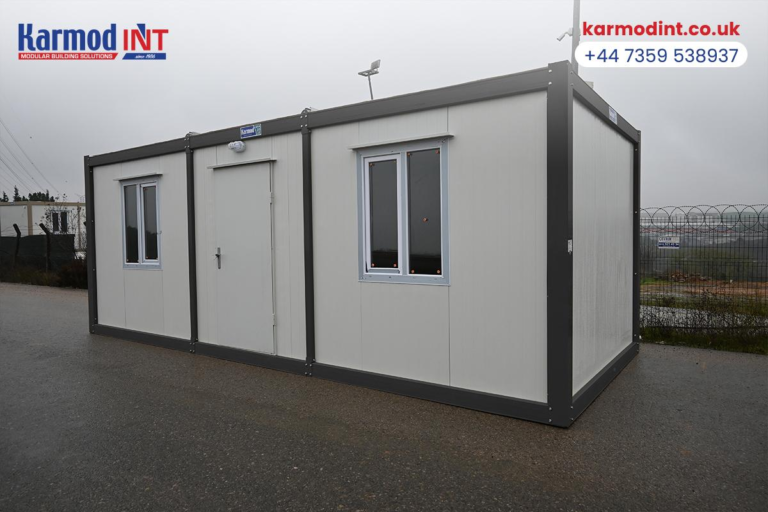Commercial Interior Design Strategies for Business Success
In the fiercely competitive business world of today, creating an exceptional commercial interior design is no longer just an aesthetic consideration; it’s a strategic investment that can significantly impact a company’s overall success.
By seamlessly integrating real estate insights with interior design, businesses can create spaces that not only captivate customers but also enhance operational efficiency and foster a positive brand experience.
This article delves into the realm of commercial interior design, exploring its importance, key elements, and the invaluable role of real estate broker services in shaping these dynamic environments.
Understanding Commercial Interior Design
Commercial interior design is the practice of creating functional and visually appealing spaces within commercial buildings, such as offices, retail stores, restaurants, and hotels. It goes beyond mere decoration, serving as a powerful tool to enhance a company’s branding, employee productivity, and customer perceptions.
A well-executed commercial interior design can leave a lasting impression on clients, influencing their overall experience and loyalty towards the business.
The scope of commercial interior design is vast, encompassing various aspects such as space planning, lighting, color schemes, furniture selection, and incorporating branding elements.
Each of these elements contributes to the overall ambiance, functionality, and energy of the space, ultimately shaping the customer’s perception of the business.
Key Elements of Effective Commercial Design
Effective commercial design encompasses several key elements that work together to create a cohesive and impactful space.
Space planning and functional design are crucial, ensuring that the layout and flow of the space are optimized for efficiency and ease of use. This includes carefully considering factors such as traffic flow, accessibility, and the placement of essential amenities.
Aesthetics play a vital role in establishing the desired ambiance and mood. Color schemes can evoke specific emotions and create a sense of cohesion throughout the space.
Lighting, both natural and artificial, can enhance the overall atmosphere and highlight specific areas or features. Furniture selection is also critical, as it not only contributes to the visual appeal but also affects comfort and functionality.
Additionally, incorporating brand identity into the design through the use of logos, color palettes, and other visual elements can reinforce a company’s image and values.
This can be achieved through subtle branding elements or more prominent displays, depending on the desired level of brand integration.
Commercial Interior Design Services
To achieve a successful commercial interior design, many businesses seek the expertise of professional design services. These services offer a comprehensive range of solutions, from conceptualization and space planning to project management and execution.
Professional designers possess a deep understanding of design principles, construction methods, and industry trends, allowing them to create spaces that are both functional and visually stunning.
Choosing the right commercial interior design services is crucial, as they possess the knowledge and experience to navigate the unique challenges and requirements of these environments.
This includes understanding building codes, accessibility guidelines, and the specific needs of different commercial sectors, such as retail, hospitality, or healthcare.
Integrating Technology in Commercial Spaces
In the modern era, technology plays an increasingly important role in commercial interior design. From incorporating smart lighting and climate control systems to implementing interactive digital displays and virtual reality experiences, integrating technology can enhance functionality, efficiency, and customer engagement.
Smart lighting systems can automatically adjust lighting levels based on occupancy and natural light conditions, reducing energy consumption and creating a more comfortable environment.
Climate control systems can optimize temperature and air quality, ensuring a pleasant atmosphere for both employees and customers.
Interactive digital displays and virtual reality experiences can provide engaging and immersive experiences for visitors, allowing businesses to showcase their products or services in innovative ways.
These technologies can also be used for wayfinding, information dissemination, and even interactive product demonstrations.
Sustainable Practices in Commercial Interior Design
As businesses become more environmentally conscious, sustainable practices in commercial interior design have gained significant importance.
Sustainable designs not only contribute to environmental conservation but can also lead to cost savings through efficient energy and resource management.
By incorporating eco-friendly materials, such as reclaimed wood, recycled plastics, and low-VOC paints, businesses can reduce their environmental footprint while creating visually appealing spaces.
Energy-efficient lighting, water-saving fixtures, and proper insulation can further contribute to sustainable design practices.
Additionally, sustainable design principles, such as maximizing natural light and incorporating green spaces, can improve employee well-being and productivity while attracting eco-conscious consumers who value environmentally responsible businesses.
Navigating Budgets and Time Constraints
Commercial interior design projects often come with strict budgetary and time constraints. Effective management of financial resources is crucial to ensure that the project stays within the allocated budget while delivering the desired results.
One strategy is to prioritize key elements and allocate resources accordingly. For example, investing in high-quality flooring and lighting may take precedence over decorative elements that have a lesser impact on the overall space.
Exploring cost-effective alternatives, such as repurposing existing furniture or opting for locally sourced materials, can also help manage expenses without compromising on quality or design.
Leveraging the expertise of real estate brokers can be invaluable in navigating budget and time constraints. Brokers have in-depth knowledge of local markets, construction costs, and project timelines, allowing them to provide valuable insights and recommendations to streamline the design process.
Conclusion
Commercial interior design is a powerful tool that can significantly impact a business’s success. By embracing professional design services, integrating real estate insights, and leveraging the latest trends and technologies, companies can create environments that not only captivate customers but also foster productivity, efficiency, and brand loyalty.
Investing in commercial interior design is an investment in long-term business success, and by partnering with experienced real estate brokers, businesses can unlock the full potential of their commercial spaces. Through strategic space planning, incorporation of branding elements, and sustainable practices, companies can create spaces that resonate with their target audience while contributing to a more environmentally conscious future.
By understanding the importance of commercial interior design and leveraging the expertise of professionals in the field, businesses can stay ahead of the competition and create spaces that not only inspire but also drive profitability and growth.







